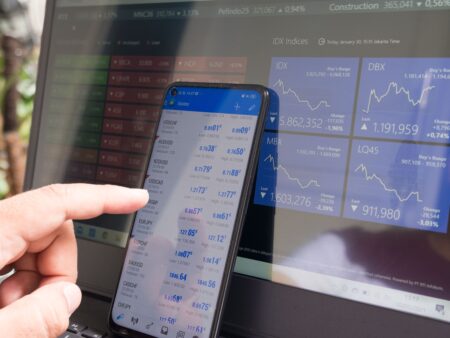A successful journey in forex trading is paved with careful planning and a well-thought-out strategy. In this chapter, we will delve into the importance of constructing a trading plan. This plan is your guiding light in the complex world of forex, helping you navigate the markets with clarity, purpose, and discipline.
Building a Trading Plan

Before you make your first trade, it’s essential to establish a solid foundation with a comprehensive trading plan. Here are the key components to consider when creating your plan:
1. Define Your Objectives: Clearly articulate your trading goals. Are you aiming for short-term gains, long-term growth, or a balance of both? Having well-defined objectives will guide your decision-making process.
2. Risk Tolerance: Assess your risk tolerance honestly. How much capital are you willing to risk on a single trade? Your risk tolerance will help determine your position sizes and the overall risk level of your portfolio.
3. Trading Strategy: Select a trading strategy that aligns with your objectives and risk tolerance. Are you inclined toward day trading, swing trading, or a longer-term investment approach? Your strategy should encompass technical and fundamental analysis methods.
4. Entry and Exit Rules: Specify the criteria for entering and exiting trades. This includes identifying entry points, setting stop-loss orders to limit potential losses, and establishing profit-taking rules.
5. Position Sizing: Determine the appropriate position size for each trade based on your risk tolerance and the size of your trading account. Avoid overleveraging, which can lead to significant losses.
6. Risk Management Rules: Define your risk management rules, including the maximum percentage of your trading capital that you’re willing to risk on a single trade. This is crucial to protect your account from substantial drawdowns.
7. Trading Schedule: Establish a trading schedule that aligns with your lifestyle and availability. Are you a full-time trader or someone who can only trade part-time? Adherence to your schedule is vital for consistency.
8. Monitoring and Review: Regularly review and assess your trading plan’s performance. Are your strategies working as expected? Adjust your plan as needed based on your observations and market conditions.
9. Record-Keeping: Maintain a detailed trading journal to track your trades, including entry and exit points, reasons for each trade, and outcomes. A journal provides valuable insights for improvement.
10. Emotional Discipline: Acknowledge the role of emotions in trading and develop strategies to manage them effectively. Emotional discipline is crucial for sticking to your plan during times of market volatility.
11. Continuous Learning: Commit to ongoing education and improvement. The forex market is constantly evolving, and staying updated on new strategies, tools, and market developments is essential.
Conclusion
A well-structured trading plan is your compass in the forex market. It provides guidance, discipline, and a framework for decision-making. By investing time and effort in creating and following your trading plan, you significantly increase your chances of success in the world of forex trading. Remember that trading is a journey, and a robust trading plan is your trusted companion along the way.









